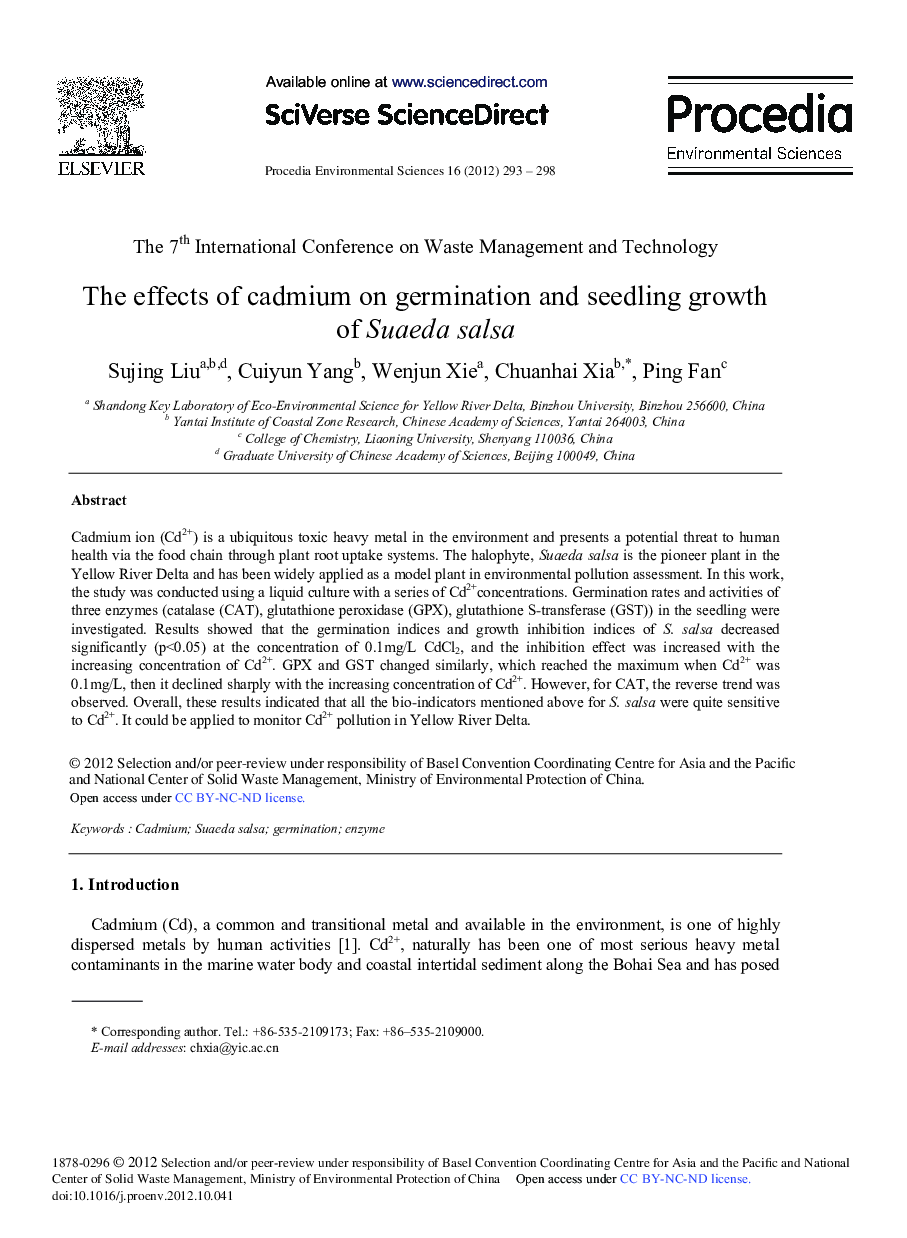| Article ID | Journal | Published Year | Pages | File Type |
|---|---|---|---|---|
| 4402669 | Procedia Environmental Sciences | 2012 | 6 Pages |
Cadmium ion (Cd2+) is a ubiquitous toxic heavy metal in the environment and presents a potential threat to human health via the food chain through plant root uptake systems. The halophyte, Suaeda salsa is the pioneer plant in the Yellow River Delta and has been widely applied as a model plant in environmental pollution assessment. In this work, the study was conducted using a liquid culture with a series of Cd2+ concentrations. Germination rates and activities of three enzymes (catalase (CAT), glutathione peroxidase (GPX), glutathione S-transferase (GST)) in the seedling were investigated. Results showed that the germination indices and growth inhibition indices of S. salsa decreased significantly (p<0.05) at the concentration of 0.1 mg/L CdCl2, and the inhibition effect was increased with the increasing concentration of Cd2+. GPX and GST changed similarly, which reached the maximum when Cd2+ was 0.1 mg/L, then it declined sharply with the increasing concentration of Cd2+. However, for CAT, the reverse trend was observed. Overall, these results indicated that all the bio-indicators mentioned above for S. salsa were quite sensitive to Cd2+. It could be applied to monitor Cd2+ pollution in Yellow River Delta.
